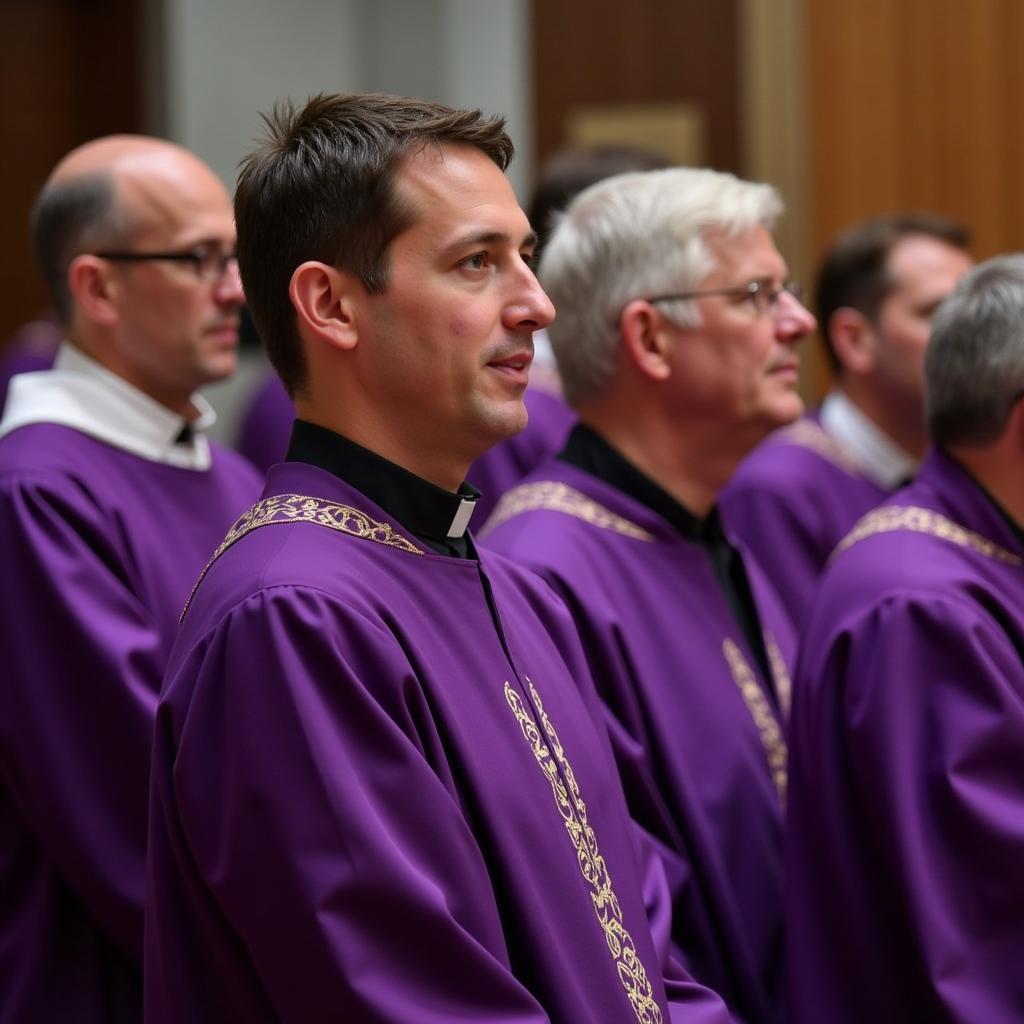Purple is a color often associated with royalty, mystery, and penance. During the season of Lent, it’s a common sight in churches and religious settings. But why is purple the color of Lent? The connection isn’t arbitrary; it’s steeped in history and symbolism, reflecting the spirit of preparation and reflection that defines this important period in the Christian calendar.
The Symbolism of Purple in Lent
Purple’s association with royalty and power ironically connects it to the sacrifice of Jesus, the King of Kings. The color signifies Jesus’s kingship and highlights the ultimate sacrifice he made during Holy Week. Moreover, purple has long been associated with penance, humility, and sorrow, all themes central to the Lenten season. Lent is a time for introspection, repentance, and preparing our hearts for Easter. Purple visually represents this inner journey. It’s a reminder of our human fragility and our need for redemption. The color also symbolizes the mourning and suffering of Christ’s passion.
 Purple decorations in a church during Lent
Purple decorations in a church during Lent
Historical Roots of Purple in Lent
The use of purple during Lent can be traced back to the early Church. In the Byzantine Empire, purple dye was expensive and difficult to produce, making it a color reserved for emperors and royalty. The Church adopted this practice, using purple vestments and decorations to signify the importance of the Lenten season. This practice continued to spread throughout the Christian world. Over time, different shades of purple, such as violet and lavender, have also become associated with Lent, each carrying its own nuanced meaning.
Why Not Other Colors?
You might be wondering why is the color of lent purple and not, say, red or black? While red is the color of martyrdom and is used during Holy Week, it’s specifically associated with the blood of Christ. Black, often associated with mourning, is primarily reserved for Good Friday. Purple, on the other hand, embodies the preparatory nature of Lent, a time of reflection leading up to the events of Holy Week and the celebration of Easter.
 Priest wearing purple robes during Lent
Priest wearing purple robes during Lent
Purple in Different Christian Traditions
While purple is the most common color associated with Lent across various Christian denominations, there are some variations. Some churches use violet, a deeper shade of purple, to signify the penitential aspect of Lent more strongly. Other traditions incorporate rose-colored vestments on the fourth Sunday of Lent (Laetare Sunday) to mark a moment of joy and anticipation amidst the solemnity of the season. Even within these variations, the core symbolism of reflection and preparation remains consistent.
Experiencing Purple During Lent
Beyond the church setting, individuals can incorporate the symbolism of purple into their personal Lenten journeys. This could involve wearing purple clothing, using purple candles during prayer, or even incorporating purple foods into their diet. These acts serve as visual reminders of the spiritual significance of Lent and encourage a deeper engagement with the season. Similar to how some people find that does gel food coloring work for slime, using purple during Lent can be a creative way to symbolize the themes of this season.
Conclusion
The color purple during Lent serves as a powerful visual reminder of the season’s themes of repentance, reflection, and preparation for Easter. From its historical roots in royalty and penance to its diverse expressions across different Christian traditions, purple encapsulates the spirit of Lent, inviting us to journey inward and prepare our hearts for the joy of the resurrection. Remember the rich symbolism of this color as you move through the Lenten season. If you are interested in learning more about color symbolism, you might find this article about why is lent color purple helpful.
FAQ
-
What is the main color of Lent? Purple is the primary color associated with Lent.
-
Why is purple associated with royalty? Historically, purple dye was expensive and rare, making it a color reserved for royalty.
-
What does purple symbolize during Lent? Purple represents penance, humility, sorrow, and preparation for Easter.
-
Are there any other colors used during Lent? Some churches use violet or rose, but purple remains the most common.
-
How can I incorporate purple into my personal Lenten journey? You can wear purple clothing, use purple candles, or incorporate purple foods into your diet.
-
Is purple used in all Christian denominations during Lent? While prevalent, there might be slight variations in usage across different denominations.
-
What is the significance of Laetare Sunday? Laetare Sunday, the fourth Sunday of Lent, sometimes incorporates rose as a symbol of joy and anticipation.
Other Questions You Might Have
- What are the traditional practices observed during Lent?
- How can I make the most of the Lenten season?
- What is the history and significance of Easter?
For more insights into the fascinating world of color, check out our other articles such as can flies see the color white and what color is baltimore ravens.
Need assistance with color selection or design for your space? Contact us at Phone: 0373298888, Email: [email protected] or visit us at 86 Cau Giay, Hanoi. We have a 24/7 customer service team ready to help.

